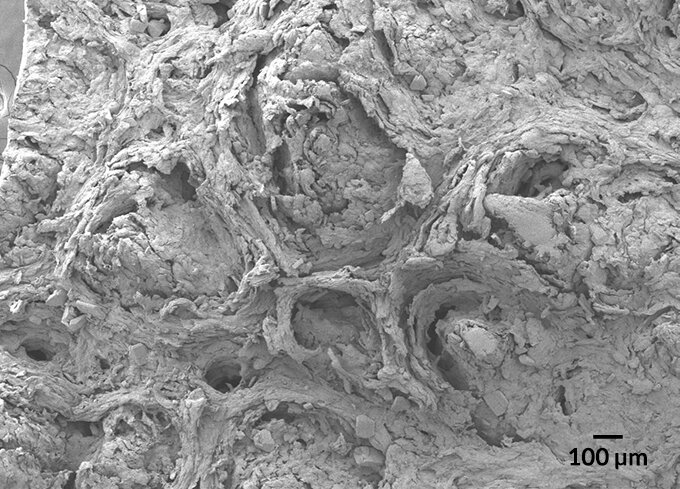11 Dec 2024

Tired Earth
By The Editorial Board

A trio of researchers at the University of Akron in Ohio has conducted a study of the polar bear paw with a focus on the papillae—the microstructures on the footpad that help with traction. Nathaniel Orndorf, Austin Garner and Ali Dhinojwala have published their paper in Journal of the Royal Society Interface.
As climate change progresses, ecosystems around the world have begun to change. One of those ecosystems is the Arctic, where creatures such as polar bears live. And as such ecosystems change, scientists study the possible impact on plants and wildlife. In this new effort, the researchers noted that polar bears have received much attention in the news due to loss of ice that they need to survive.
But they also note that many aspects of polar bear anatomy have yet to be seriously studied. To that end, they undertook a study of the polar bear paw, which the researchers suggest plays a major role in its survival.
Prior research has shown that polar bear claws are shorter than those of other bears, and their paws are smaller relative to their body size. But what has not been studied is the papillae—the microstructures that grow on the bottom of the paw pad that help with traction.
The work began with a simple comparison of bear paw types. They found that besides polar bears, black and brown bears also have bumps on their pads, but sun bears do not. They also noticed that the bumps on the paws of the polar bear looked different from the bumps on the other two kinds of bears. That led them to take a closer look. They found that in the papillae, the crests of the bumps, were taller in polar bears than in the other two species.
Suspecting that taller papillae served a specific purpose, the researchers created 3D models of the polar bear paw pad that showed that taller papillae result in better traction—an important characteristic for a bear that walks on ice most of the time. More specifically, they found that the papillae were 1.5 times taller than those of brown or black bears. They also found that the taller papillae meant that polar bears had 1.3 times more paw surface area, giving the polar bear paws a 30–50% increase in frictional shear stress.
Source : phys.org
Comment